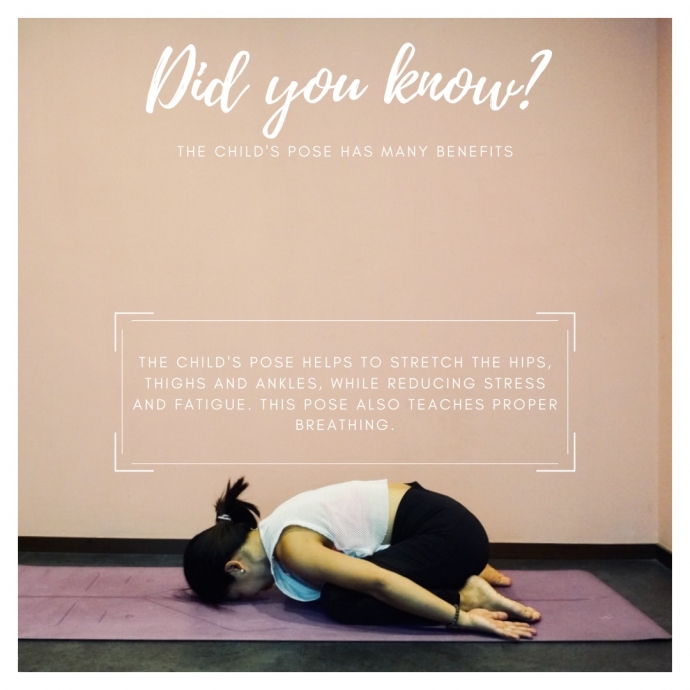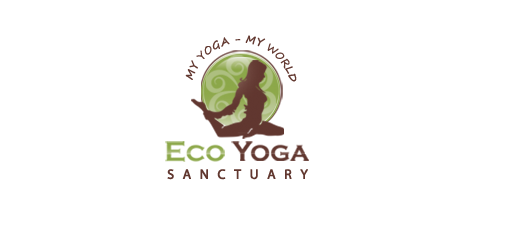
Did You Know: Child Yoga Pose
Did you know a simple Yoga pose, like the child, is significant to your practice?
Balasana (read as bah-LAHS-uh-nah) or child pose is a yoga pose widely use by beginners, advanced, and regular practitioners. Though it may look simple and passive, it has many benefits for your body and mind.
Balasana is a Sanskrit word that means two words. "Bala" which means child and "asana" as pose. It is also used to counterpose other asanas like backbend and wheel pose. Every yogi knows that Child pose is their fallback when the body seems overwhelmed, tired, or needs a short break.
Before proceeding through the instructions of steps do note of if you are a person with diarrhea, disc problems, pregnant, knee injury (currently or recently) to perform the pose cautiously and with proper knowledge. Variations for pregnant will be stated after and helpful tips for those with injury. Moreover, it is advisable to practice under a certified Yoga instructor for a professional supervision and proper guidance.
Here are the steps to a child pose:
- Begin with a sitting position where the knees and ankles are together. Toes are untucked.
- Inhale to straighten your back and exhale as you walk your hands forward to drop your forehead on the mat. Chest is close to your thighs. Arms, shoulder, neck, and jaw are relaxed.
- (For modification, you may extend your arms to the front with palms facing down or lay beside you with the open palms or touching your toes.)
- Continue to breathe and hold for 4-12 counts. Try to rest your buttocks on your heels.
- To release: on your next exhale sit back on your heels.
It is important to know the variation of a pose so you can do the one most effective for you.
- For expecting mothers, protect your baby by spreading your knees wide and keeping your toes close to each other. They should only practice a wide-legged variation of the pose.
- For you with knee injury or pain, options for extra padding on your knees are folding the mat thickly or adding a blanket.
- For overweight, option to separate your toes, knees widely spread, and put the weight to your hips than the upper body.
- If your buttocks are not reaching the heels, add a bolster or blanket for support.
- If your forehead is not reaching the mat, you can rest your forehead on a stacks of block, bolster, pillow, blanket, or fist.
- To make the pose active extend your arms. To keep the pose restorative and gentle keep your arms tuck beside the thighs.
Make the child pose yours. Modify and use props when you need to. Or not. It can be active in the morning and restorative by night. Most importantly, make the most of it.
Including child pose in your daily practice is good for your body and mind. Below are at least 13 benefits known for this Asana:
- Stretches the ankles, shoulders, and thighs
- Your ankles, shoulders, and thighs are few of the most used parts of the body. Stretching these is a good way to release stored tension, improve flexibility, and lessen the probability of any injury.
- Opens the hips
- Opening the hips helps to release stress, support the lower back, achieve better alignment, and increase creativity.
- Elongates the spine
- Elongating the spine promotes a healthy back. A healthy spine gives a good balance, better flow circulation from the upper part of the body to the lower, and strengthens the whole body.
- Strengthens the knee
- The knee is the largest joint in the body and is very prone to injury and pain. A strong knee supports the whole body, allowing us to move from one place to another and be active either in sports or daily tasks.
- Eases neck and back pain
- Pain on the neck and back is a result of muscle injury caused by overuse, poor posture, repetitive motion with continual stress on both parts. Stretching both neck and back helps to ease and alleviate the pain faster.
- Releases muscle tension
- Muscle rigidity, or also known as muscle tension, is a condition where the brain makes a muscle to stay semi-contracted for an extended period even when the muscle is no longer needed for movement. If left untreated can lead to chronic pain, discomfort, stiffness, limited movement in any part of the body affecting physical performance.
- Improves digestion and massages internal organs
- When belly is resting on the thighs, in every deep breath you take into your stomach massages the internal organs and improves the digestive system. Alleviating and preventing bloating, discomfort, gas pain, constipation, and enhances metabolism.
- Centers your breathe
- Focusing on breathing allows you to find comfort in the Asana, stay longer in the pose, and connect the body and mind.
- Calms the mind
- Once you have centered the breathing your thoughts will start to focus on the present and increase awareness of what is happening in the body.
- In each inhale bringing the attention to every sensation happening in the body. Each long exhale calms the mind enabling the brain to rest, relax, and release stress.
- Becoming present brings your focus on what's happening now, acknowledging every sensation happening in the body, allowing your mind to rest.
- Helps fight insomnia
- A body and mind that is centered, relaxed, and focused on breathing is more likely to sleep faster, better, and longer. The mind is calm so it allows the body to sleep. The fully relaxed body allows the mind to rest.
- Relieves fatigue, anxiety, and stress
- The psoas muscle located in our hips is directly connected to our stress response: "fight" or "flight". Opening, stretching, and strengthening your hip allow yourself to feel and experience the emotion of fatigue, anxiety, and stress to scatter. While the stream of thoughts arises, this pose trains your mind to center the breath so the mind and body become calm and relax amidst.
- Relaxation
- Amazing things happen when your mind and body are relaxed. You are relieved from stress, improved memory & focus, better quality of sleep, stronger immune system, less of pain, become productive and creative, motivated, and happier.
- Reminds resting is good
- In Yoga our aim is balance. This pose reminds you that you can pause and relax. Doing so cultivate a better sense of ability to rest.

